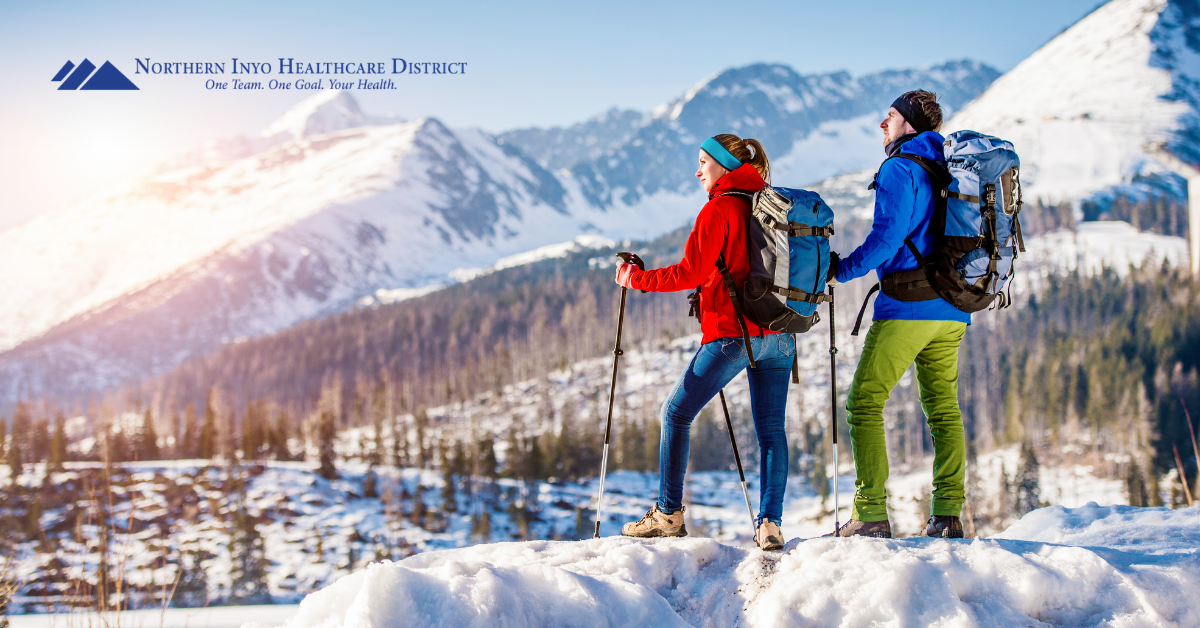Warding Off Winter Joint Pain
- Category: Blog
- Posted On:

Keeping Your Joints Healthy This Winter
Winter weather means venturing into the great outdoors for some of your favorite seasonal sports and activities. However, aches and pains affecting your joints can get in the way of your snowy fun. Fortunately, there are many ways you can keep your pain under control and keep you out and about this winter.
Eat a Healthy Diet
Like most areas of your health, eating a nutrient-dense diet can help to support your orthopedic health. When you’re looking to build strong and resilient joints, opt for foods rich in calcium, vitamin D, protein, and omega-3 fatty acids.
Try adding these foods to your shopping list the next time you head to the grocery store:
- Yogurt
- Beans and lentils
- Mushrooms
- Nuts and seeds
- Dark leafy greens
- Milk
- Poultry
- Eggs
- Lean cuts of red meat
Get Out & Get Active
Although the cooler weather may tempt some people to stay indoors, leading a sedentary lifestyle can leave you at an increased risk for injuries when you resume activity. Introducing regular physical activity into your routine can help keep your joint health in top condition.
It is recommended that adults get at least 150 minutes (2.5 hours) of moderate-intensity physical activity each week. This equates to about 30 minutes a day, five days a week.
Increases Flexibility & Range of Motion
Stretching and warming up is an essential part of any fitness routine. This helps you to warm up your muscles and loosen your joints. This helps to prepare your body for physical activity. It also helps to improve your flexibility and range of motion, helping you improve your athletic performance.
Improved Balance & Coordination
Staying physically active also helps to support your balance and coordination when you build muscle in your core. This helps to prevent slips and falls when you’re playing sports and during everyday activities.
Prevents Injuries
When you lead an active lifestyle and build up your joints’ supportive muscles, it helps protect your joints from sustaining injuries. It also helps to protect your bones and joints if you slip or fall by adding additional cushioning and protection around them.
Practice Safety Protocols for Winter Sports
When you’re staying active, it is essential that you practice proper safety protocol when participating in your favorite winter sports. Whether you’re an experienced athlete or a beginner, any and everyone is susceptible to sustaining an injury regardless of their skill level.
So before you go hitting the slopes, be sure that you’re fully prepared and ready to have some safe winter fun!
Most Common Winter Sports Injuries
One of the most important parts of protecting yourself this winter is knowing what some of the most commonly sustained injuries are for winter activities and how they’re sustained .This can help you be more cautious down the road.
Some of the most commonly sustained winter sports injuries include:
- Sprained ankle: the supportive ligaments in the ankle have been overstretched or torn.
- Partial dislocation of the shoulder: The head of the upper arm is partially out of the socket.
- Complete dislocation of the shoulder: The head of the upper arm is completely out of the socket
- Broken Bones: too much force is applied to the apple, your bones can break.
Injury Prevention
In order to effectively protect your joints and prevent injuries, it is essential that you follow proper safety protocols before heading outdoors. Some helpful tips to keep in mind include:
- Wear protective gear.
- Use the proper equipment for your activity.
- Warm up before you participate.
- Watch out for others you may collide with.
- Don’t play through an existing injury.
- Stay hydrated.
Cut Down On Cracking Your Joints
Although many of us are guilty of cracking our knuckles, necks, back, and other joints—overdoing it can wreak havoc on your joint health if you overindulge.
What Actually Makes Your Joint “Pop”
The ‘cracking’ sound that you hear and feel when you apply added pressure to your joints is caused by the bubbles in your synovial fluid popping. This fluid helps to lubricate your joints.
The “cracking” sound you hear when you apply pressure to your knuckles is actually caused by bubbles in your synovial fluid bursting from the added pressure or pulling your bones apart. This synovial fluid is responsible for lubricating your joints.
Why People Crack Their Joints
Many people crack their joints regularly for several different reasons.. Some of the most common reasons that people enjoy popping and cracking joints include:
- They like the sound.
- They feel a sense of release.
- It’s a nervous habit.
- Some people do it to relieve stress.
How it Affects Your Joints
While indulging in this habit can be relatively harmless, doing it incorrectly can cause serious damage to the various joints in your body. Some of the ways that cracking your joints too often can be harmful include:
- Wear away the cartilage in your joints.
- Cause damage to vertebral disks.
- Dislocation in fingers joints.
If you feel like your joints are feeling stiff or need readjusting, it is suggested that you see an orthopedic specialist rather than trying to pop and crack your way to relief.
Orthopedic Care in Bishop, CA
At Northern Inyo Healthcare District, our team of orthopedists take a holistic approach to care, focusing on you as a whole person rather than specific symptoms or conditions. Whether you’re suffering from aches and pains or mobility issues, we’re here to help improve your quality of life.
For more information about the orthopedic services at Northern Inyo Healthcare District or to schedule an appointment, call (760) 873-2605.

.jpg)

